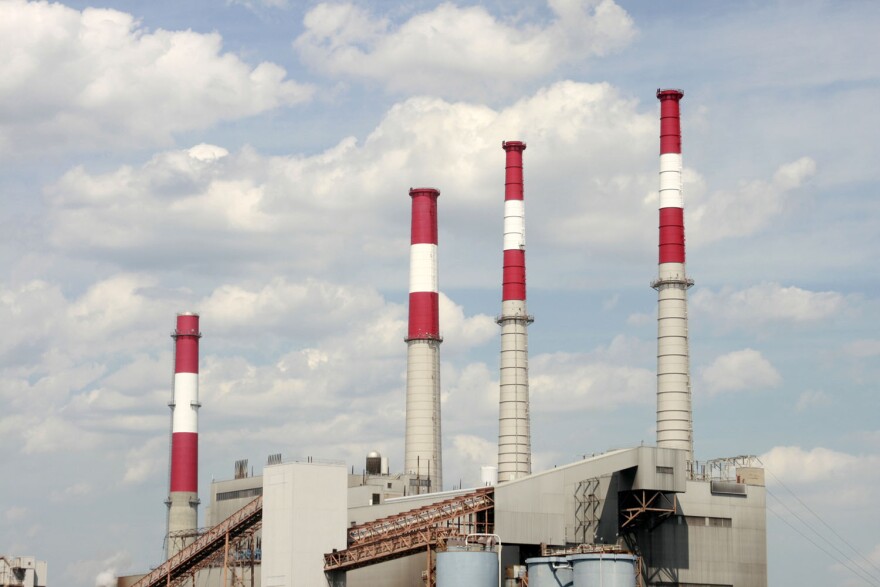When President Obama announced that he wanted the EPA to fast-track regulations on carbon emissions at existing power plants, the outcry was immediate.
“How are we all to blame?” asked Joe Manchin, Democratic senator from West Virginia, on Fox and Friends, “and why are we taking the hit that we’re going to be taking? Why is this economy going to be taking this hit? Why are jobs going to be lost? …and they will be lost!”
That was almost a year ago. The EPA is supposed to release the first draft of the carbon rule on June 2nd, and operators of coal-burning power plants everywhere are bracing for impact.
In the Midwest where there are states that get as much as 70 percent of their electricity from coal, many are worried that these new regulations will cost jobs, but here in New England, states may already be compliant with the rules before they are even written.
Remember RGGI?
While what the new regulation will look like remains unclear, EPA officials have been talking publicly about the broad outlines of their plan
And the word they use over and over is flexibility.
“It is going to be flexible, and it will set goals,” Curt Spaulding, EPA administrator for New England told a crowd at an event last week at St Anselm College, “I can’t tell you what those goals are going to be, that’s being worked in Washington at the highest levels. We talked about the president being involved in this, last time I checked he makes those calls not me.”
This is what the states know so-far: they will likely be handed a carbon reduction goal from the EPA; they will have to come up with a plan for how they intend to get there; the EPA will okay that plan.
But in the Northeast, it’s possible that the regulations required are already in place, in the form of the Regional Greenhouse Gas Initiative, or RGGI.
Skeptical? Even very careful White House staff are hinting that might be the case.
“So, I think the RGGI model – the model that New England and the other RGGI states have – I think that basic framework, without getting way ahead of this thing, is likely to be compatible… but I can’t speak to the levels,” said Dan Utech, special assistant to the President for Energy and Climate Change, also at the Saint Anselm event.
Impacts of a Rising Carbon Cost On Fossil Fuels | Create Infographics
Ahead of the Game
New England is already in much better shape than the Midwestern states to meet whatever “levels” of CO2 reduction the feds might ask for.
Here, CO2 emissions have already fallen 29 percent since 2007, because cheap natural gas and a market redesign that made the region more sensitive to fuel prices led to a build out of gas burning power plants. RGGI – a cap-and-trade style program that puts a floating cost on carbon – further ratchets down how much carbon power-plants here can emit by 2.5 percent every year, or 32 percent by 2020.
And while it’s by no means a given that RGGI is aggressive enough for the Feds there have been hints EPA’s rule could be based on RGGI, at least in part.
“I don’t know if what New England is doing is fully compliant now,” said Spaulding, “but I can certain to tell you that the good track record has been informing the process.”
Consulting groups that worked on RGGI say they have been engaged by the EPA to help design the federal rule, and last year the president issued a memo that said the new rule should include market-based instruments “to the greatest extent possible.”
That’s because according to Kathleen Barron, Senior vice-president of Exelon – the nation’s largest operator of nuclear power-plants – generators using cleaner burning fuels prefer cap-and-trade systems.
“As long as you can achieve your budget, you can do whatever the heck you want,” explains Barron, “as long as what’s coming off the stack is less than the cap.”
Costs and Rebates
In the Granite State there are is another uncertainty: how will the EPA view what New Hampshire is doing with its RGGI proceeds?
The rest of New England invests the compliance money into energy efficiency in order to further drive CO2 savings and push down energy bills. In New Hampshire, about a quarter of the money (depending on how much right to emit a ton of carbon sells for in each auction) goes to energy efficiency; the rest is given back to consumers.
But utilities are also allowed to recoupe that money through their electric rate. This results in an odd dance where RGGI money is rebated to rate-payers, who have to pay a higher rate to finance the rebate.
The EPA’s Spaulding said last week he can’t say how the feds will view this arrangement. “I would think, the nexus here is reducing carbon emissions, so whatever they do it’s got to do that,” he mused.
And with the price of a ton of carbon rising in every auction beginning last fall, New England is finally going to see if RGGI can drive carbon emissions down.
**An earlier version of this story incorrectly stated that Joe Manchin is a Senator from Kentucky. He is, in fact, from West Virginia**








